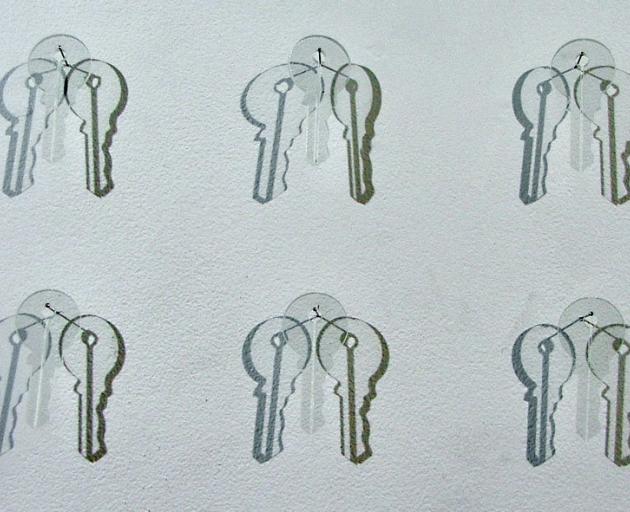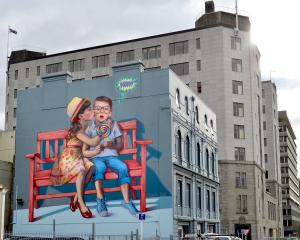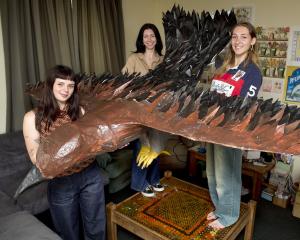
''White Silence'', Kate Belton (School of Art Gallery, Riego St)
Christchurch's earthquakes left an immeasurable impact on its residents.
More than just the lives lost, there was the loss of familiar surroundings, and the constant nervous worry that more quakes could come.
These concerns found their way into the art of the city's creative residents, among them Kate Belton, whose ''White Silence'' is a series of installations each of which references the disaster of February 2011.
Belton has pictured the city as a palimpsest, a document from which information has been erased and replaced.
Using the symbol of the key to represent lives and property lost, Belton has produced a series of reminders of the trauma of February 22.
Most poignant is a solid plaster and resin air bed, upon which rest shards of street names in neon.
The bed's solidity represents the one spot that many of the refugee residents could call their own, yet the instability of that seeming secure place is emphasised by the concept of the shattered streets upon its surface.
The gallery is filled with the sound of birdsong, song eerily absent in the days following the quake.
This ''avis interregnum'' became a lasting impression of the postquake city, and the return of the birds' song a hopeful sign of the triumph of life over disaster.

''Host'', Craig Freeborn (Mint Gallery)
There is a sense of the uneasy and unclean in many of the portraits in Craig Freeborn's exhibition ''Host''.
This is only natural, Freeborn is deliberately using the term in a wide sense which incorporates both the term's social meaning and the concept of a carrier body for disease.
The works are depicted with bold yet precise brushwork, producing bleak, raw works with more that a slight influence of 20th century artists such as Bacon and Freud.
For the most part, the palette is muted, with many of the more close-up images emerging greyly from deep brown gloom.
Where there is a more naturalistic setting, the dark imagery remains, but there is a wealth of detail.
The deliberately distorted lines of the barbershop in The chair and the hazy distant background of the phallically shaped Shelter both show skilful work.
Perhaps ironically, two of the standout pieces are those which do not feature the human form.
The rigorously composed yet enigmatic cargo of Bound shows off the artist's skills nicely, despite seeming somewhat out of place alongside the other works in the exhibition.
The studio, with its image of the cluttered titular room seen from a darkened hallway is also very impressive.

''Encircled'', Jan Ingram and Rod Eales (The Artist's Room)
Rod Eales and Jan Ingram are a well-matched pair of artists, both of whom have the knack of being able to beautifully reproduce the play of light on and through glazed and glass surfaces.
In their current joint exhibition, ''Encircled'', the two artists have used the restriction of the circular subject area, presenting a series of round still-life paintings where the emphasis is on the patterns of light on ceramics.
Jan Ingram's work is a series of gently but expertly rendered gouache pieces.
The medium is one well-suited to the subjects, displays of flower vases backlit against windowpanes, allowing the gouache's watercolour-like properties to gently wash the light across the surface while simultaneously still having enough body to represent solid forms.
The works have a friendly luminosity, especially when the background consists of frosted glass, a subject Ingram handles very well.
Rod Eales has used porcelain Crown Lynn swans as the subject for her oil works, and has produced very pleasing images in which the forms revealed by flashes of light are the primary focus.
The soft lines of the porcelain are very effectively captured, especially in those pictures in which black swans have been used as the subject.












